Motorhome day ten: Mount Maunganui to Hastings
We planned (and somewhat surprisingly also achieved) a prompt departure for a long day’s driving today. Along the coast past Papamoa we were still driving next to the same beach as we’d seen from the top of Mount Maunganui. Then, striking south towards Rotarua we followed a policy of averting eyes and sticking fingers in ears saying “la la la”, because we’re saving Rotarua for the return journey. A brief peek indicated it’s rather beautiful. Initially the road was good but there was no particularly spectacular scenery. More sheep, though, at last! The landscape became rather hobbity, with small round hills looking quite man-made, although they are not.
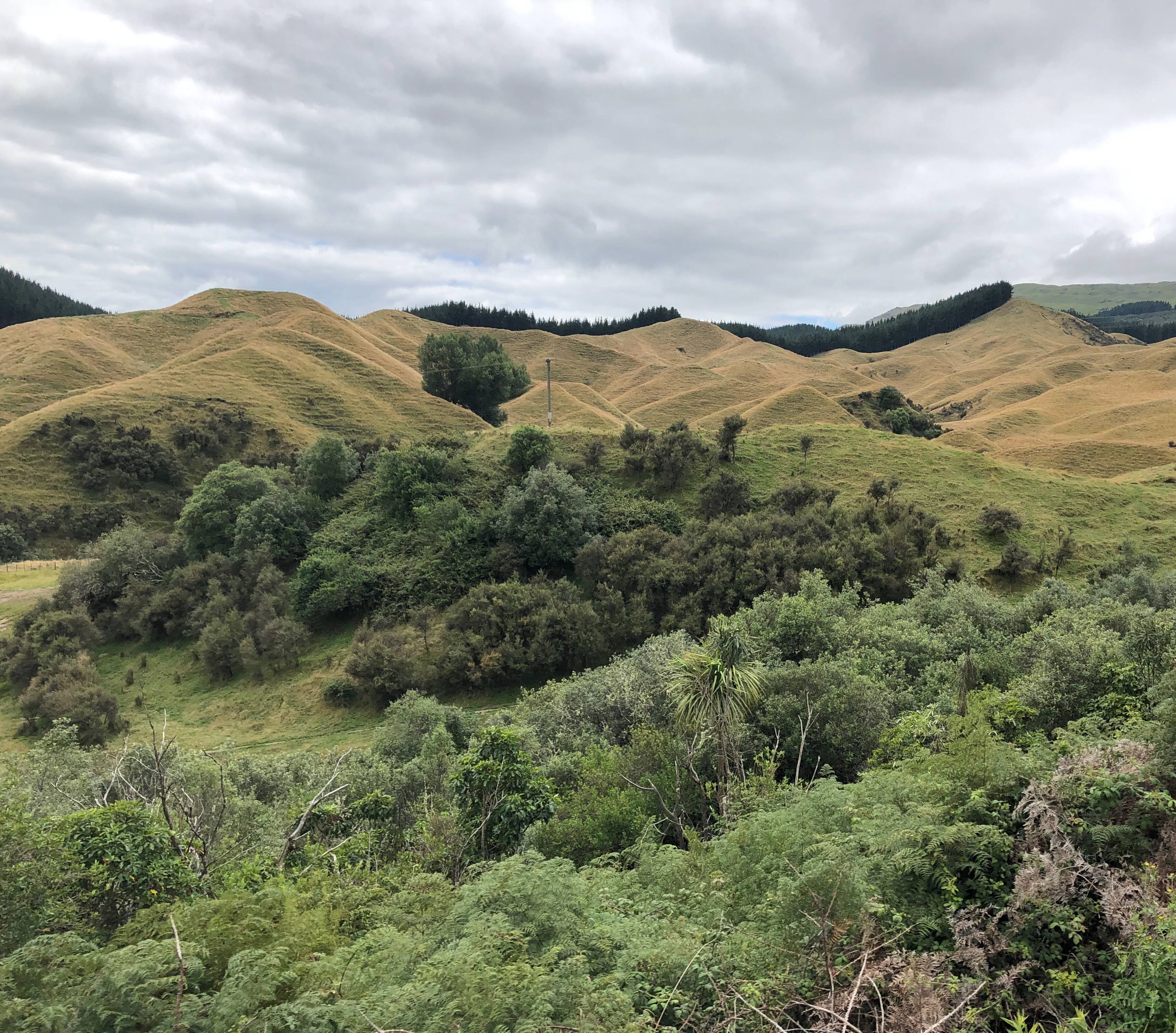
An enormous volcano appeared on the horizon, very vertical, quite Vesuvius-esque with a big cone.
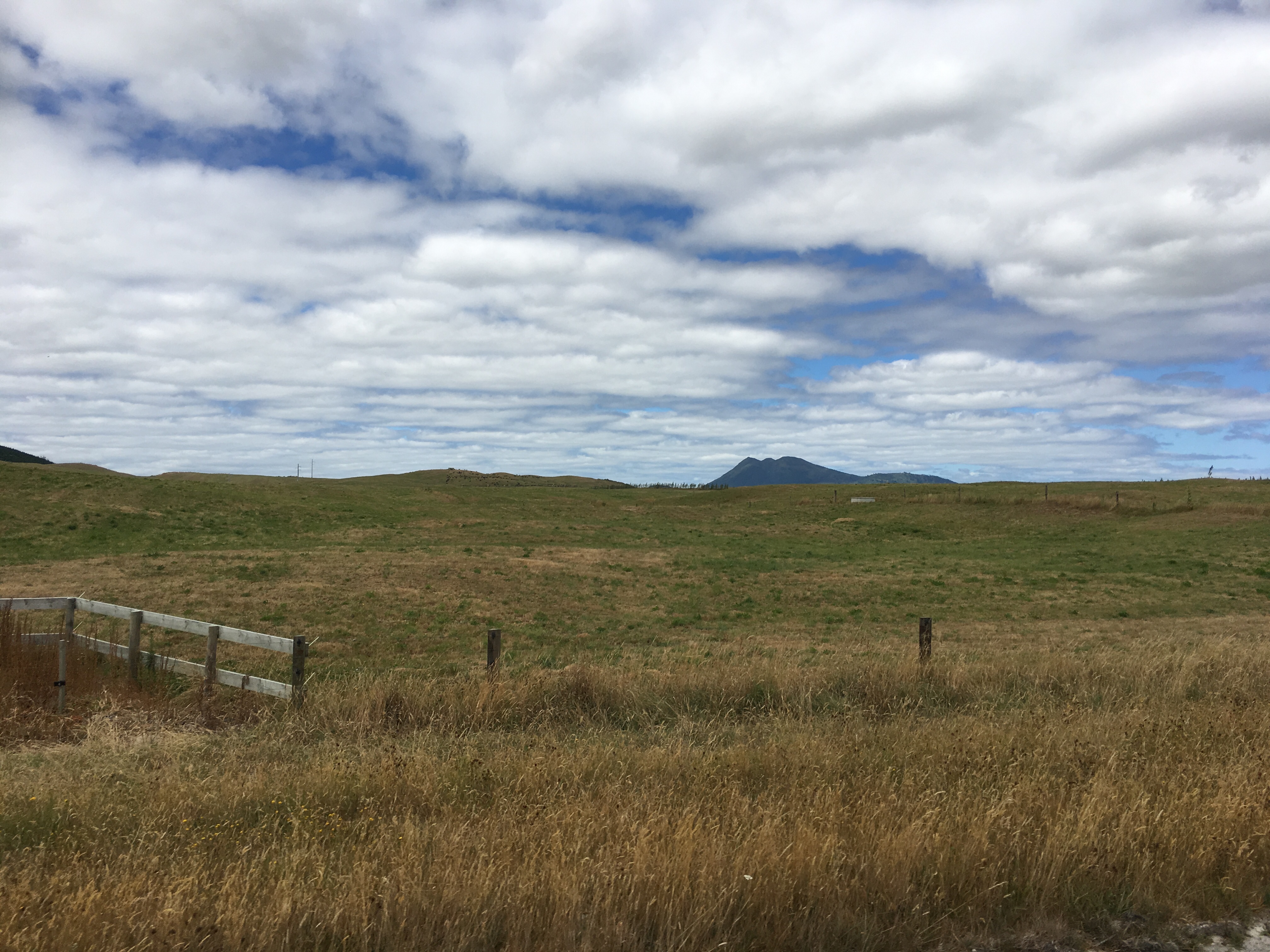
We travelled along the valley on the Thermal Explorer Highway, seeing plumes of steam rising from the ground everywhere. We skirted Lake Taupo (saying “la la la” again for the same reason), and passed a huge geothermal plant, great racks of shiny pipes everywhere. Free power! Well, mostly free. Even the ground next to the highway was steaming. We drove around three sides of the volcano, before heading left for Napier. There was much pine cultivation, and consequent lorries on the road carrying enormous loads of logs. After stopping for a quick lunch at Opepe, we went through an area very reminiscent of Scotland, specifically Rannoch Moor. There was even heather growing, and some small pools. Then the highlight of the day, a beautiful, deep gorge, the road winding up and down through it.
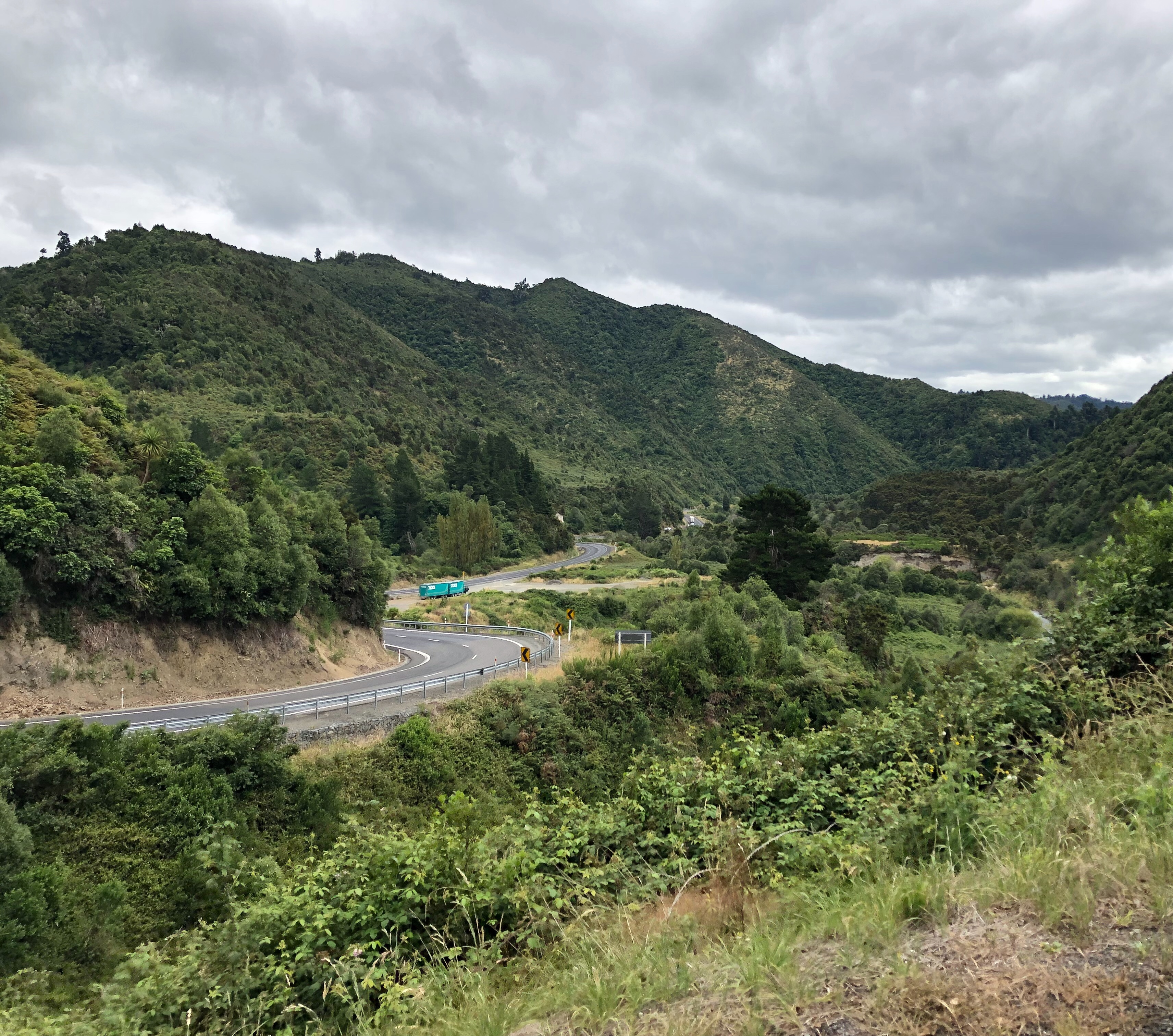
It was extraordinarily green, and a lovely drive with hardly any traffic around we could take it at our own slow, rather lumbering pace. There was a sign for a lookout point, which have usually been well worth the diversion, so we dived in for a peek. This one had a beautiful waterfall – Waipunga Falls.
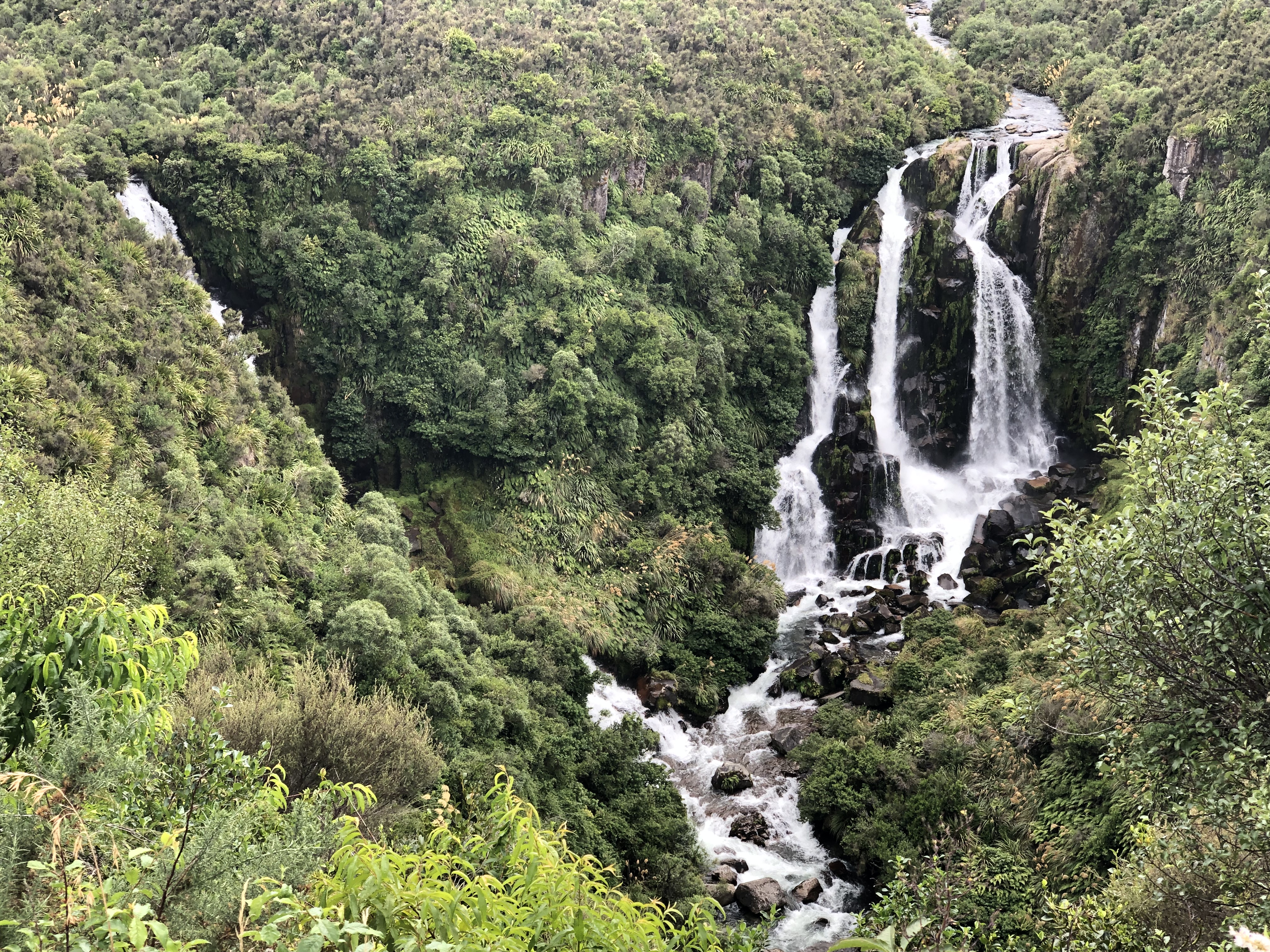
Coming down from the summit, the windscreen filled suddenly with views of Hawke’s Bay. There were disconcerting signs for Eskdale and the Esk Valley, and even a railway and a little station, just like in the Lake District. Or not, actually, as it turned out – it’s a recently re-opened line, with trains running for the first time in June last year, and will replace an estimated 5500 logging lorries on the road we’d just driven. We stopped at the Esk Valley vineyard for a tasting (and spitting in my case, with driving still to do).
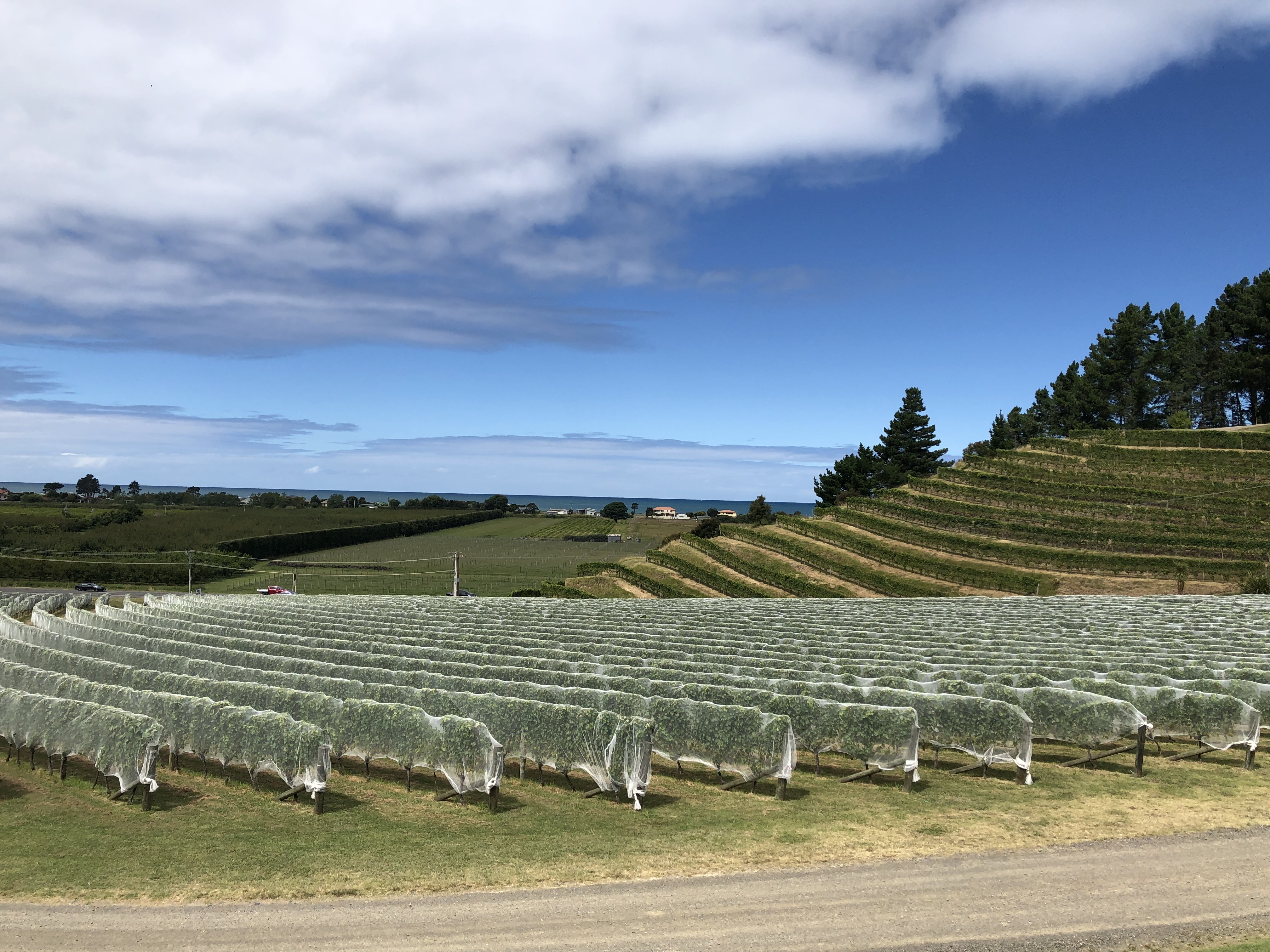
Mentioning Eskdale in the Lake District to our tasting guide, Sue, she told us that the Esk Valley was named so by an English settler, who called the river after the Esk at home. It may have been the Scottish one, though. We chose some wines to buy for consumption on our trip and climbed back into the van for our last few kilometres, past Napier and on to Hastings. We were given a pleasant pitch next to a little artificial river, and foraged a little rosemary from a huge bush in the garden. It will have to be an early start in the morning for Martinborough – better not drink too much of the new wine!
Motorhome day eleven: Hastings to Martinborough
We needed to get to Martinborough and park up the van before 1pm in order to enjoy a winery lunch without either of us having to drive afterwards, so it was another very prompt getaway. It was State Highway Two all the way, but with scenery quite different from its more northerly kilometres. We seemed to have left the kauri forests and tree ferns behind, here it was all tufty rye grass humps and distant mountains. The journey and the campsite check-in all went very smoothly, and we walked round to the Palliser winery in time for our reserved lunch table. We lingered over a platter of meats and cheeses and a bottle of Palliser Riesling. It was not one of those ‘in your face’ Rieslings, it was quite light, much in the same style as the Esk Valley one we tasted yesterday, and we both enjoyed it very much.
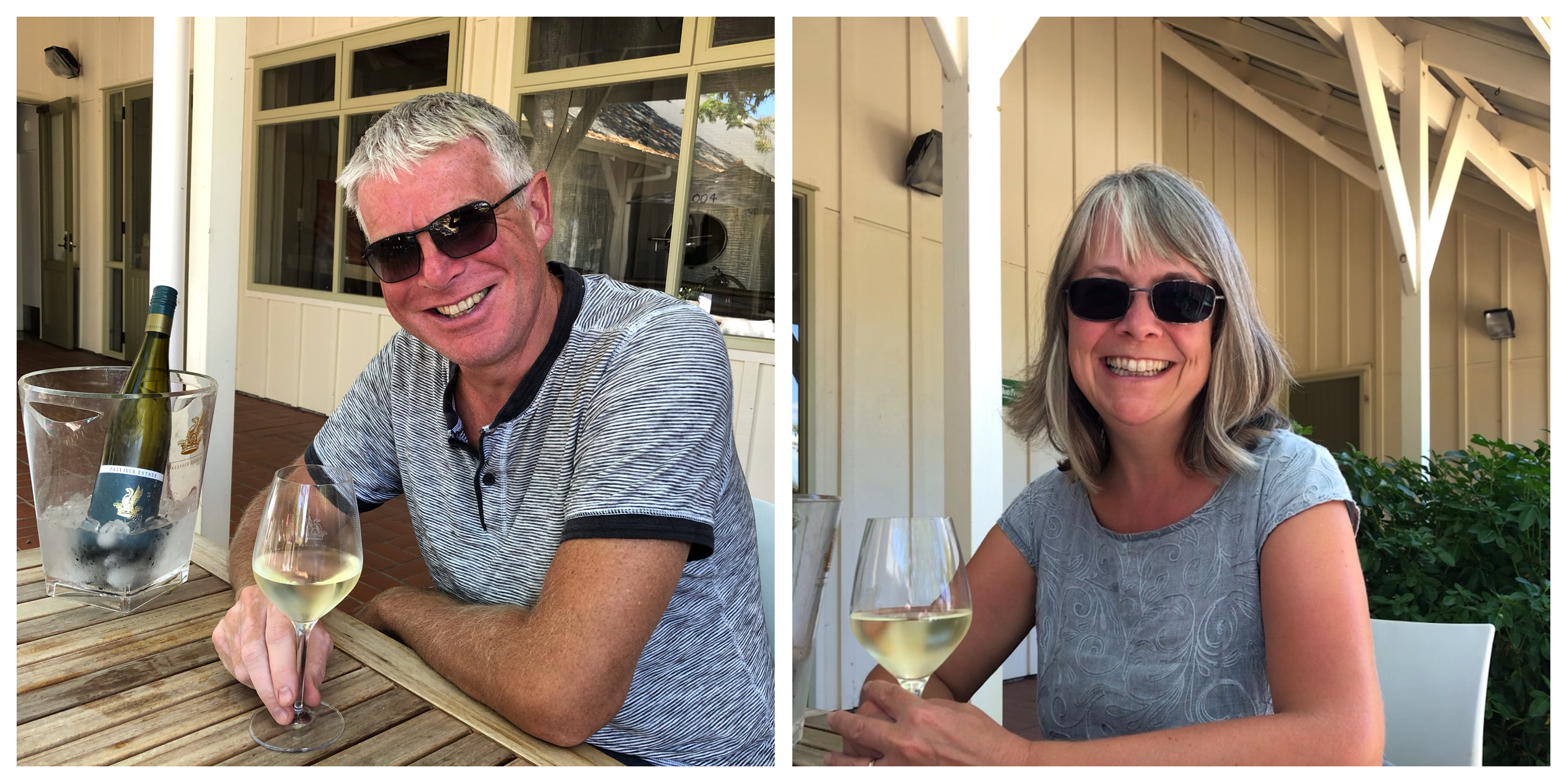
The large wine fermentation tanks were visible through the windows of the building next to the courtyard, and one of the hosts said that in a few short weeks they will be all systems go in there. It seems strange to think of harvest time being in March and April, but of course it is. They will start with the harvest of grapes they will use for their fizz. The vines adjacent to the tasting room were showing loads of red grapes (probably Pinot Noir), although they were not very large yet. After lunch we wandered in to have a look at Martinborough’s central square (and the supermarket!) and then back to the campsite for a relaxing remainder of the afternoon. It was a lovely site, very rural, vineyards on either side, and no lighting, which made for a great view of the Southern Cross constellation (also known as ‘Crux’) once it was properly dark.
Motorhome day twelve: Martinborough to Wellington
A more relaxed start to the day, as the Martinborough Vineyard didn’t open for tasting until 11am. And who, actually, wants to be tasting wine before 11 in any case?! We particularly wanted to visit this vineyard, we’ve been buying their gorgeous Pinot Noir for special occasions for more than twenty years after sampling it at a wine-tasting in Harrogate all those years ago. So it was a little bit of a pilgrimage for us to be pulling up in the motorhome right outside their gates. Gates which were firmly shut, with a big sign saying ‘CLOSED’. Oh no! But wait, what does that little piece of paper say? Phew, it says ‘visit our new tasting room’ and gives the address. Thank Bacchus for that! We wandered around for a while taking pictures of the hallowed grapes, the buildings and marvelling at actually being here at the vineyard.
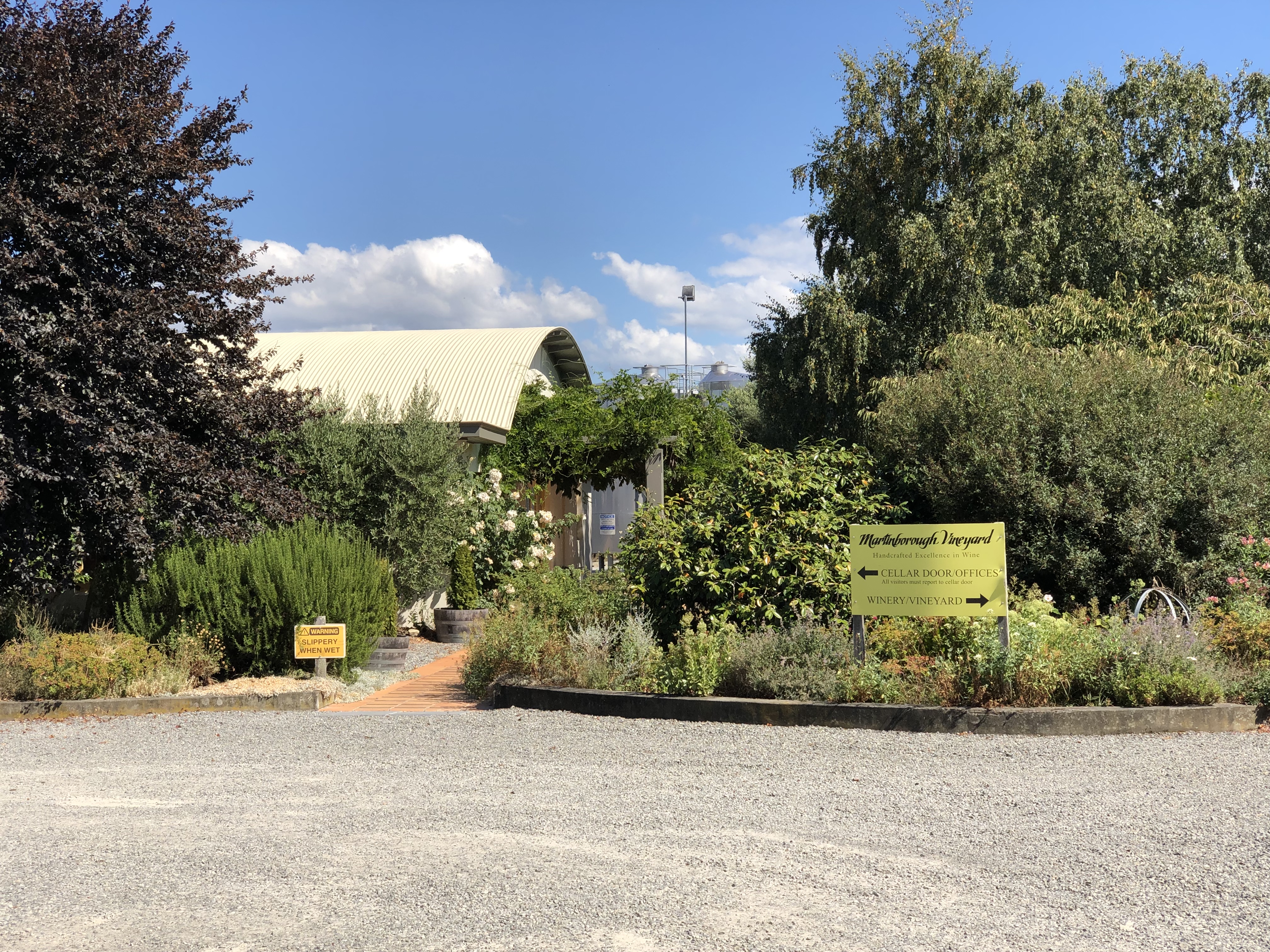
The tasting room was at Te Kairanga, about a kilometre further on. Martinborough Vineyard was apparently founded by a winemaker who was looking for territory as close as possible to the conditions in Burgundy in France, and decided that Martinborough would fit the bill. It’s been massively successful, particularly in the production of Pinot Noir, and it was vines to the left, vines to the right, all the way to the tasting building, very atmospheric with the mountains in the background. The tasting was fabulous (not just because it wasn’t my turn to be spitting it out!), an excellent host with lots of details of the wines available and the history of the vines, and we bored her with details of our Harrogate tasting. We bought a few bottles to drink along the rest of the journey – the motorhome’s officially designated wine cellar is getting quite full now!
After the tasting we got back on the road for the short journey to Wellington. What a journey it was. Almost immediately after Martinborough the road headed up, it was the Remutaka Hill Road.
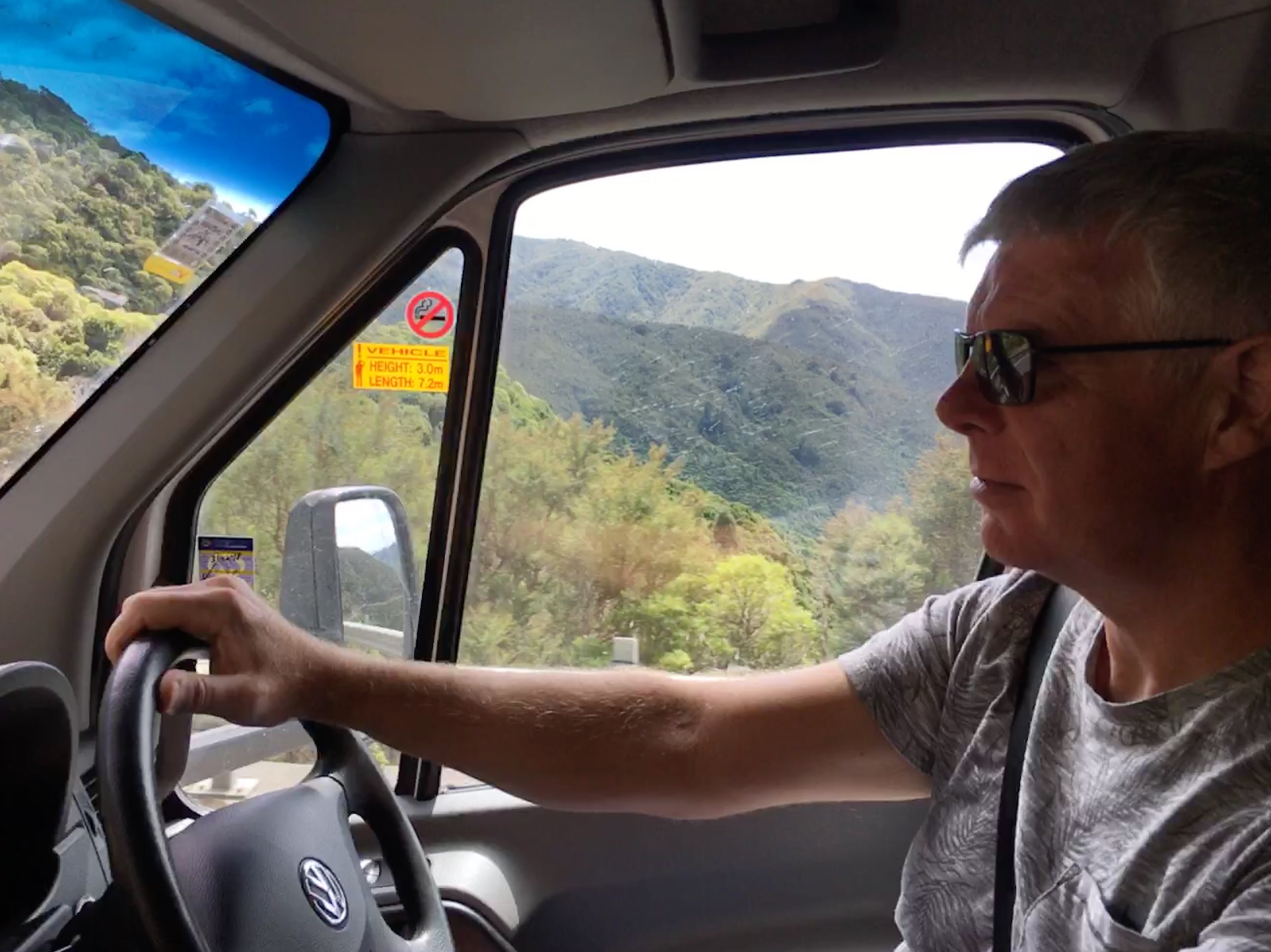
It clung to the side of the hill, and wound up through a spectacular gorge. On the opposite side it was highly forested, swathes of green in huge rolls. It looked like Nature had been doing her thing over there uninterrupted for centuries.
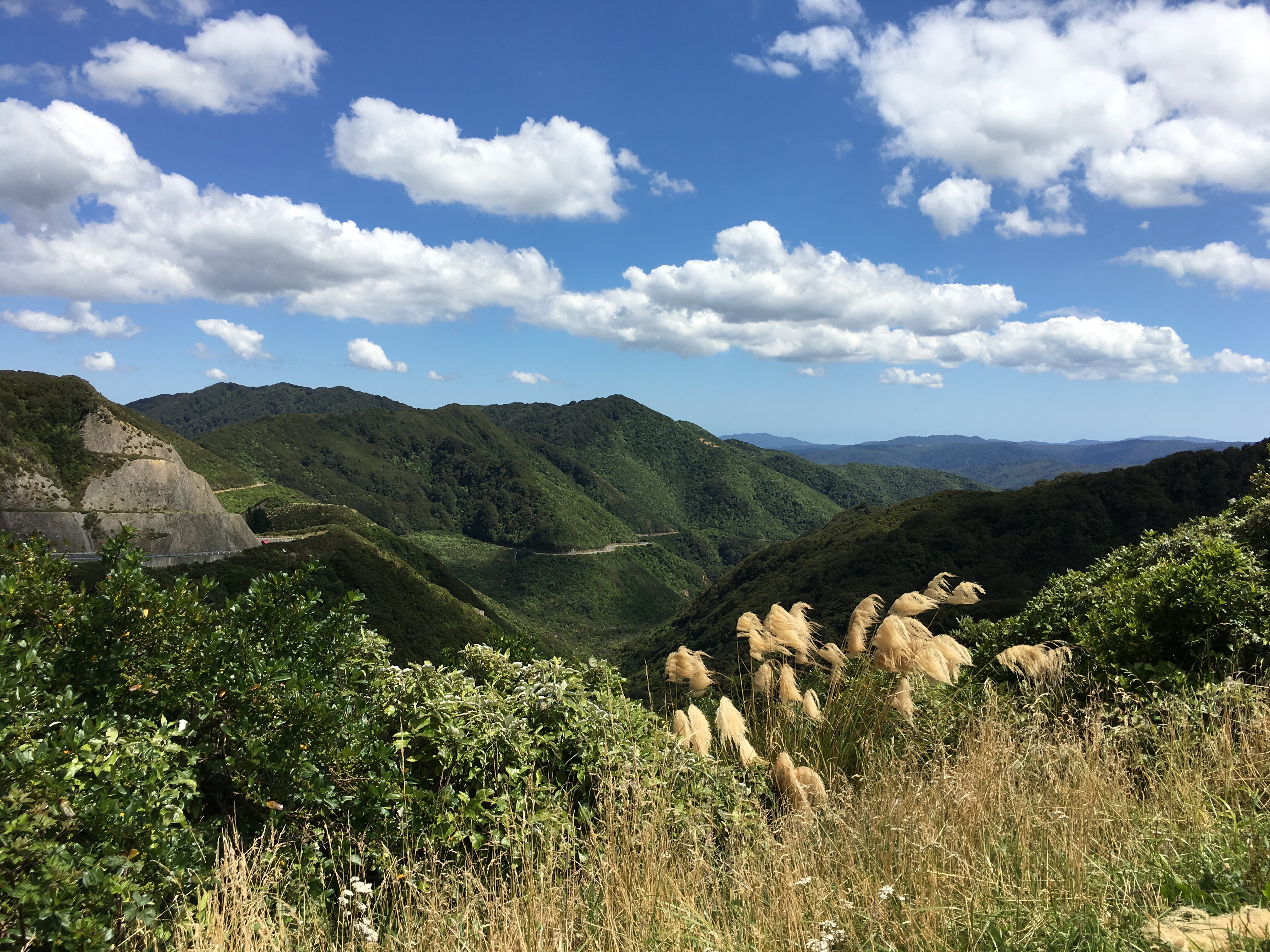
We passed a laden cycle tourist twiddling up in a low gear, what a brave man! At the top there was a lookout, with long views back the way we’d come, and on towards Wellington. There were hair-raising pictures of horses and carts on the first primitive road, and also of lines of troops marching across on their way to be sent to fight at the Western Front in the First World War. The cycle tourist arrived at the lookout while we were there, and quite honestly he didn’t look sweaty or out of breath at all, curse him! He was a French Canadian, taking four months cycling all around New Zealand. We were both a tiny bit jealous… We chatted for a while, and then hopped back into the motorhome for the downward part of the road, towards Wellington. A quick supermarket stop to stock up for our three night visit, and some motorhome admin, and we were ready to relax.
Motorhome day thirteen: Wellington
We ordered an Indian takeaway last night, and it was delivered directly to our pitch in the campsite! Brilliant service, and excellent food. It was a pleasant change after the last three one-night only stops to set up yesterday and know we won’t have to put everything away and go through the ‘leaving checklist’ until Wednesday. We had a bottle of the Martinborough Pinot Noir (after the curry, not with it!), which was very good indeed.
This morning we consulted the bus timetable and determined that we’d be on the 10:30 into Wellington, to try out the cable car and have a look at the Botanic Gardens. As we walked to the bus stop a very friendly couple from Thames (where we stopped for lunch on our way into the Coromandel Peninsula) stopped their car and offered us a lift into town. What a lovely thing! We chatted on the twenty minute drive in, about where we’d been, where they were going (South Island on the ferry, if they could get on, apparently it’s very booked up), and about the cricket, New Zealand having achieved a great Twenty Twenty series victory over India last night. They were tickled that we were planning to go to a day of the NZ vs Bangladesh Test Match on our return from the South Island.
They dropped us at the ferry terminal, and we walked the short distance to the cable car station.
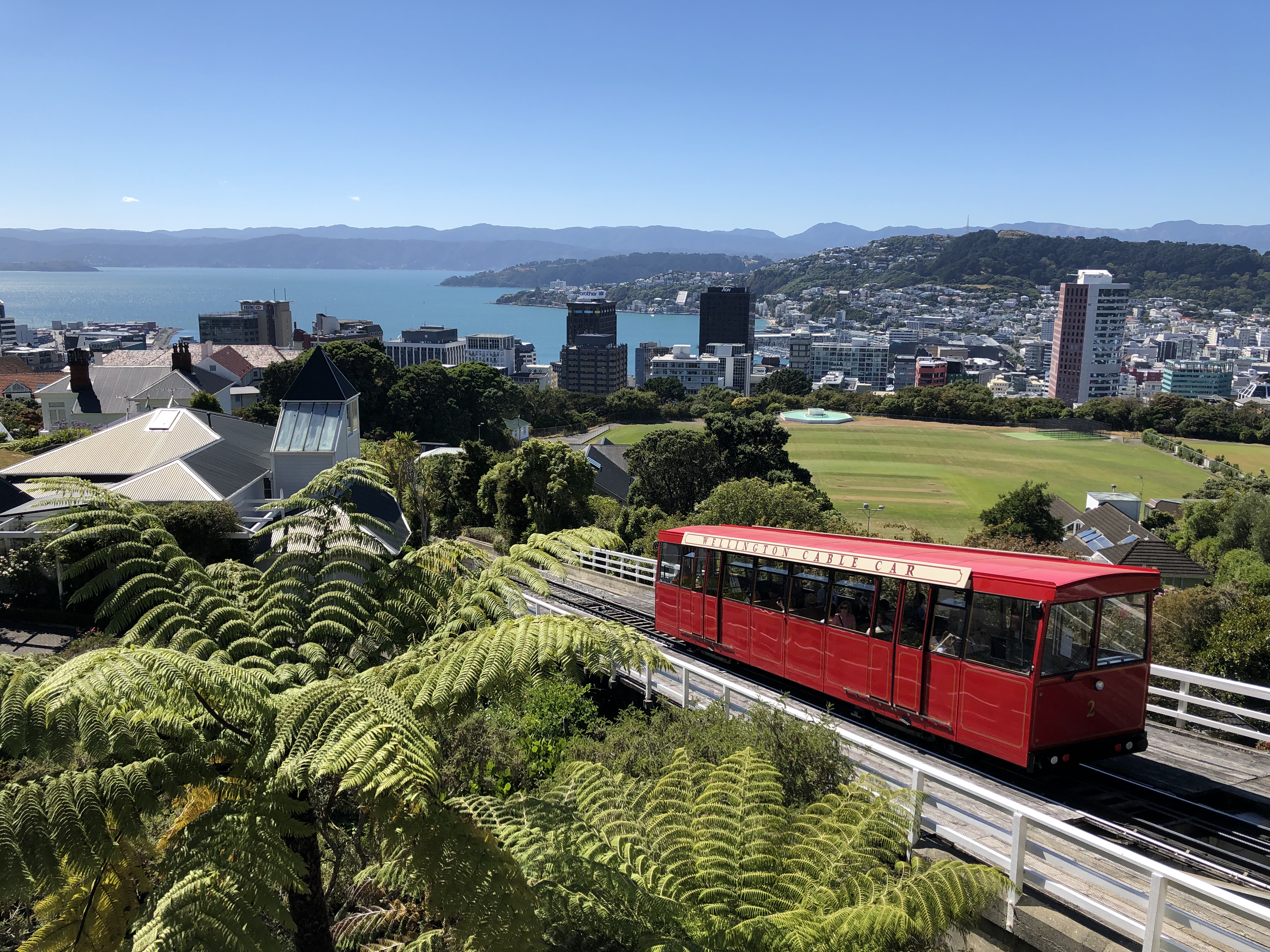
It was a funicular, speeding visitors up to the top station, calling at the University on the way. At the top, there was a good view down over Wellington, which seems tiny but perfectly formed after Auckland. The Botanic Gardens were pleasant, although not as good as Singapore or the Habitat in Penang, we decided.
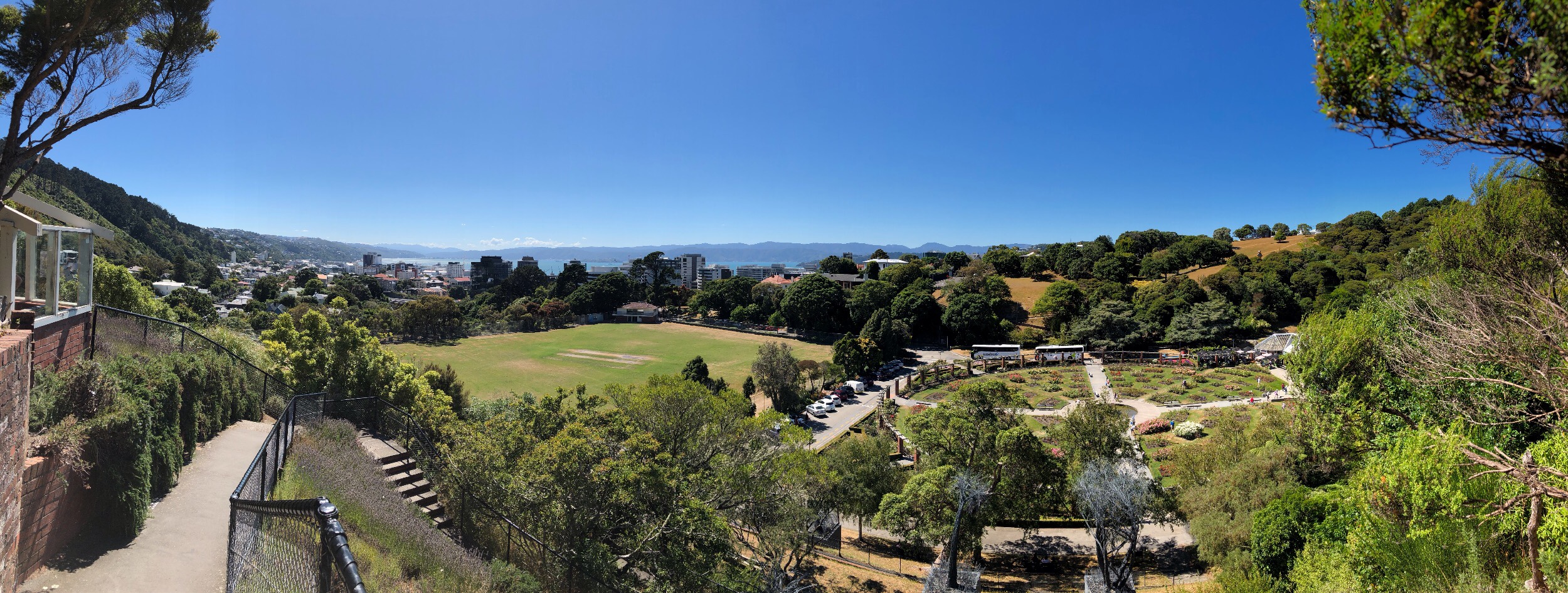
The walk back up to the top station for our return trip took us past a Henry Moore sculpture, a bit of a surprise so far from home.
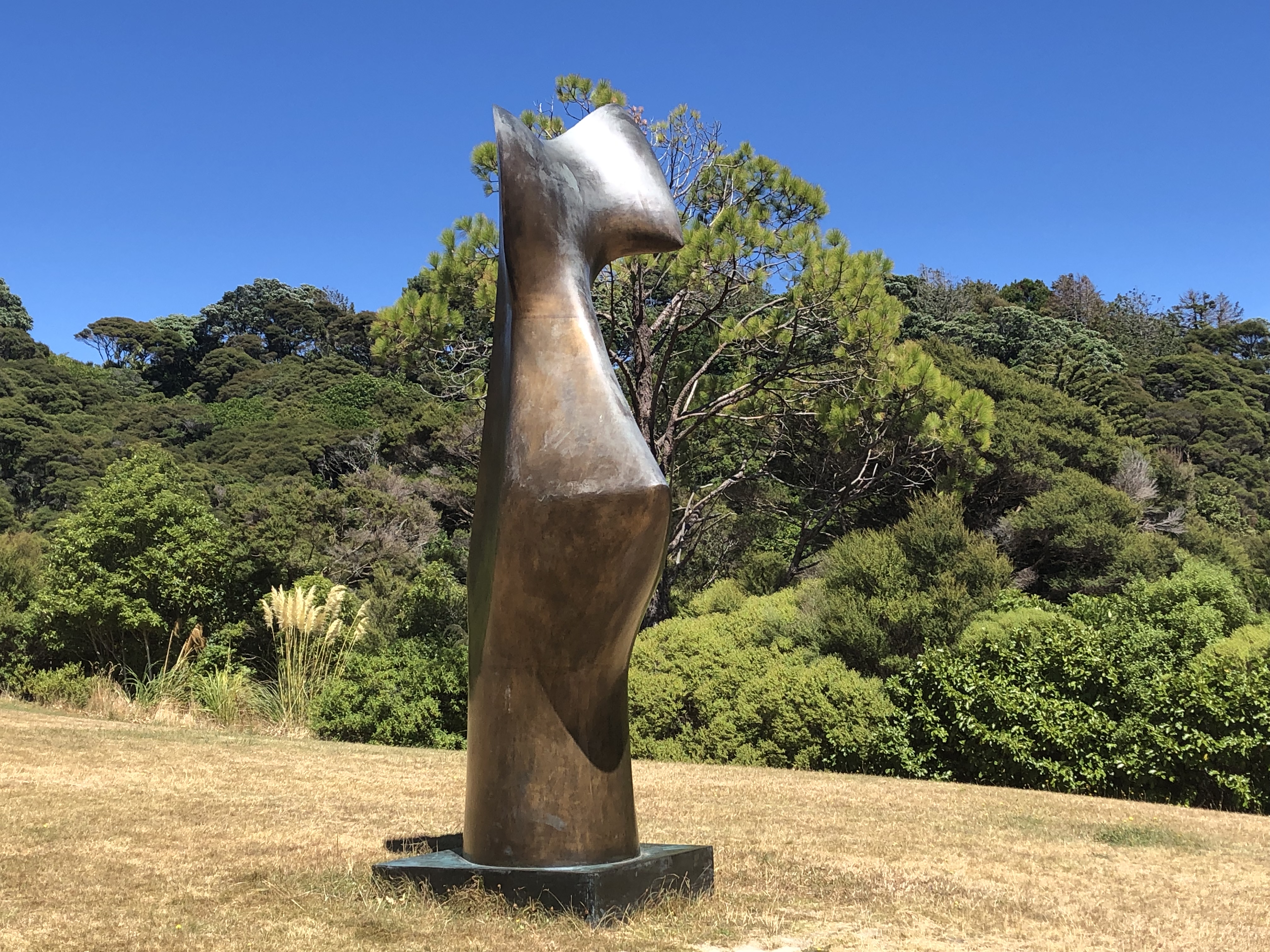
We used a human-powered sundial to check the time. It was 12:25.
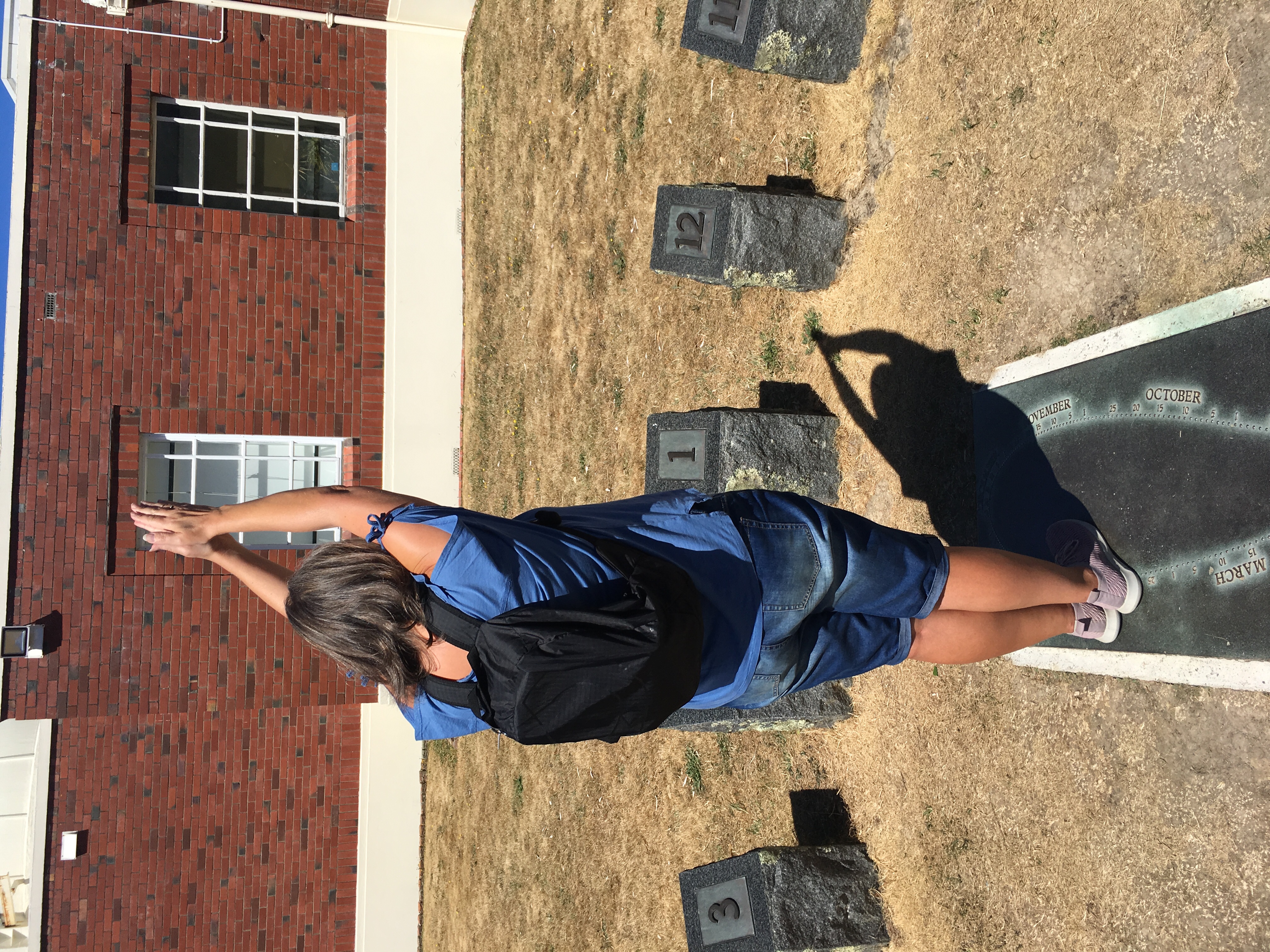
It actually was 12:25!
We wandered around the harbour and found somewhere for lunch, and then it was time for our assault on Mount Victoria, another volcanic cone. The path was quite steep and a bit rooty, but shady, which we appreciated very much, it’s been very hot today.
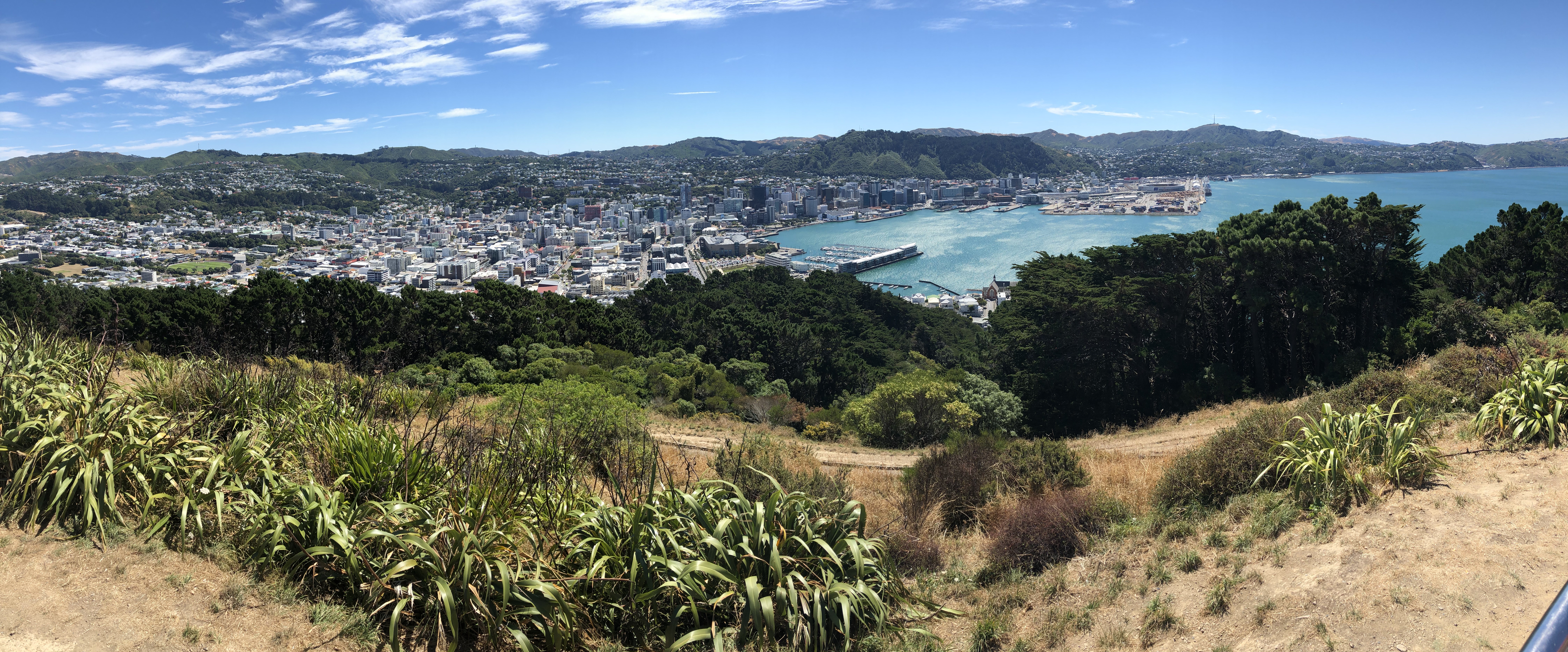
At the top there was a 360 degree view of Wellington and all its surroundings, and a triangular sculpture thing pointing out to sea, apparently in the direction of Antartica, the next land mass in that direction. It was also just possible, if you screwed your eyes up and squinted, to make out the South Island on the horizon. There were all the usual maps showing you what you could see, including the cable car and the gardens we’d come from, and some information about the fact that the North Island and part of the South Island are on different tectonic plates, and so are moving towards each other. In four million years time they will be connected, and you won’t have to get the ferry. We can’t wait quite that long, of course.
We headed back to the campsite, did a bit of laundry, and had a visit from the site’s resident ducks, who would quite like a bit of whatever’s going, thank you.
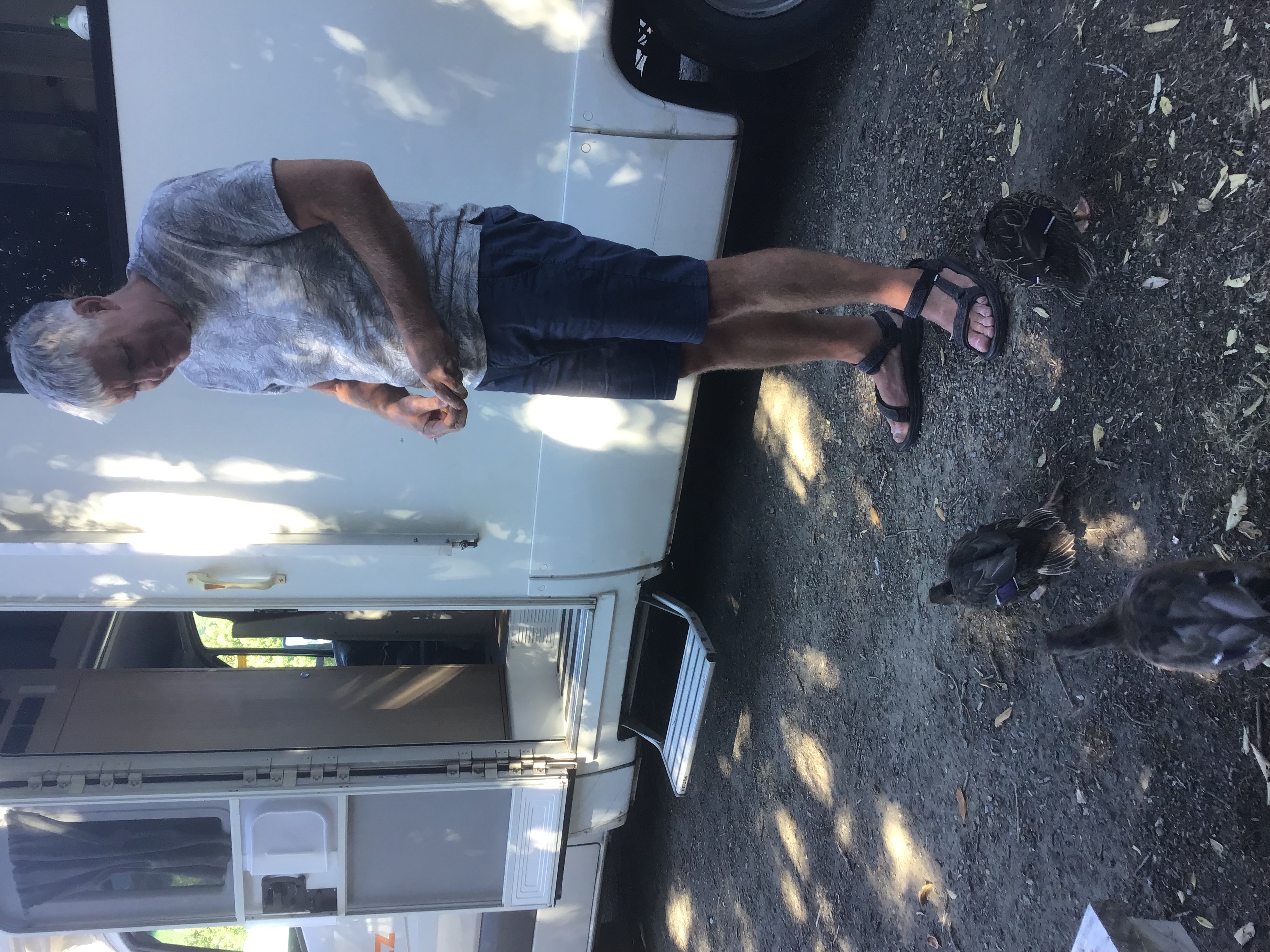
Motorhome day fourteen: Wellington
We were up early-ish again for the 9:30 bus into Wellington. It was chock-a-block with school children, in their smart black and white shorts and shirt uniform with striped ties. They all got off at a local school in Lower Hutt, and then the bus dropped us at the shuttle for Zealandia, which sounds like a slightly dodgy theme park. It’s a nature reserve, a ‘mainland island’, they call it.
First, a bit of background. Zealandia is the name for the continent, as it split off from Australia 60–85 million years ago, having separated from Antarctica between 85 and 130 million years ago. At that time, it was populated only by birds, no mammals had made it there before the split. Until the First Nations arrived from Polynesia, that remained the case. They brought rats and a type of dog (now extinct). European settlers brought rabbits, which, with no predators, quickly bred out of control. Weasels were then brought in to predate on the rabbits, but didn’t, and they also bred very fast, eating the eggs and chicks of some of the ground-dwelling native birds, including the kakapo.
In more recent years, conservationists have managed to set up nature reserves on some of New Zealand’s islands for various dwindling and endangered native species. They are carefully protected from predator species (including humans), and it’s working. There were forty kakapo chicks born this season, which has swelled the numbers to 147 as of February 2019. The lady we met in Paihia had told us about her daughter’s work as a conservationist, working with the kakapo breeding support programme. It must be very gratifying to be making a difference.
Back to Zealandia, then. Above Wellington, two dams were built to provide the city with water, but quickly abandoned when it was discovered that the upper dam sat right on a geological fault line. Note to self: check fault lines first before building dam… The land around the dams was proposed as the first ‘mainland island’, and in 1995 a predator-proof fence erected around the entire site. Once all the predators inside the fence had been eradicated, then the site was considered to be mammal-free, and therefore back to New Zealand’s original ecology. After that, they reintroduced native species to the reserve and supported their breeding, made sure to keep predators out, and watched it thrive and grow.
It’s still very carefully protected. You enter the ‘island’ through a double gate system, and the whole thing feels like Jurassic Park, if a stegosaurus lumbered into view it wouldn’t be entirely surprising. It’s gorgeous, though, ‘nice, thick, regenerating bush’ as our guide, Don, described it, and he told us that people revisiting after ten years or so are always astonished at the amount of greenery that has sprung up since the predators were all removed.
We had a long tour on foot, more than two hours, and only covered around half of what the reserve had to offer. Don showed us the highlights, including, from afar, the new takahē chick, a great achievement by the reserve, part of a country-wide breeding effort for a species which was long thought to be extinct. The chick will eventually be sent to the south of the South Island to breed there, to keep the gene pool spread as wide as possible. We also saw saddlebacks, especially after Don pulled a soft toy version out of his bag and squeezed it to make it play the saddleback’s call. There were tui, with their R2D2 calls, and Don told us that they had also been endangered before a big conservation effort, but were spreading fast throughout the country now. We’ve certainly heard them everywhere we’ve been so far, but this was the closest we’ve seen them.
Throughout our walk we could hear kaka, the native parrots, squawking in the canopy above, and then at their feeding station, there they were. They were large, not brightly coloured but a definite flash of red as they flew.
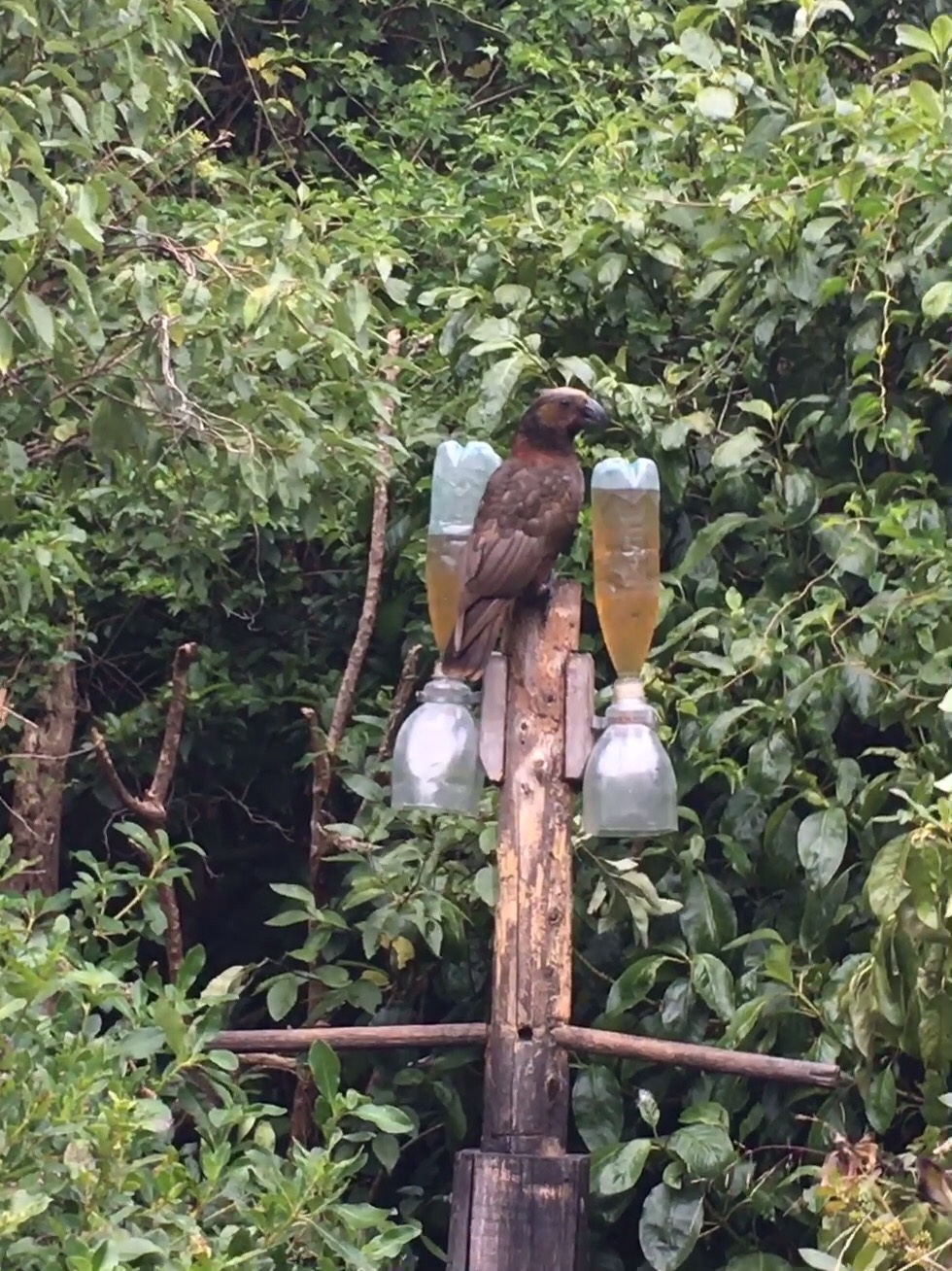
We walked over the upper dam (yep, right on the fault line!) and looked down the valley, so green and yet so close to the country’s capital city.
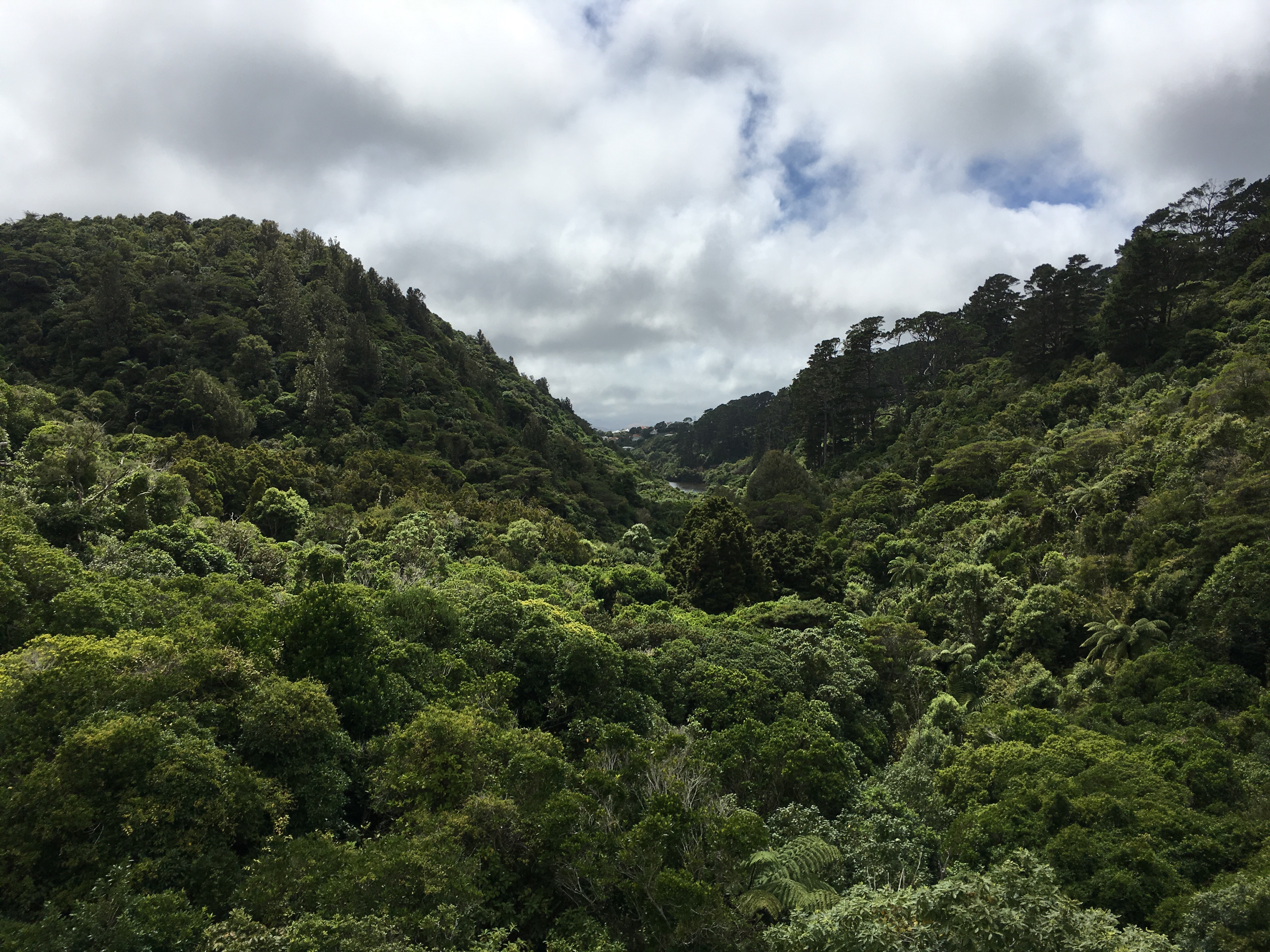
On the return walk we saw hihi and a bell bird at a feeder, a North Island robin, the kiwi habitat (they were asleep, of course), and tuatara, prehistoric-looking reptiles. They were quite difficult to spot against the baked earth, but Don said that February is a great month to see them, basking in the sun.
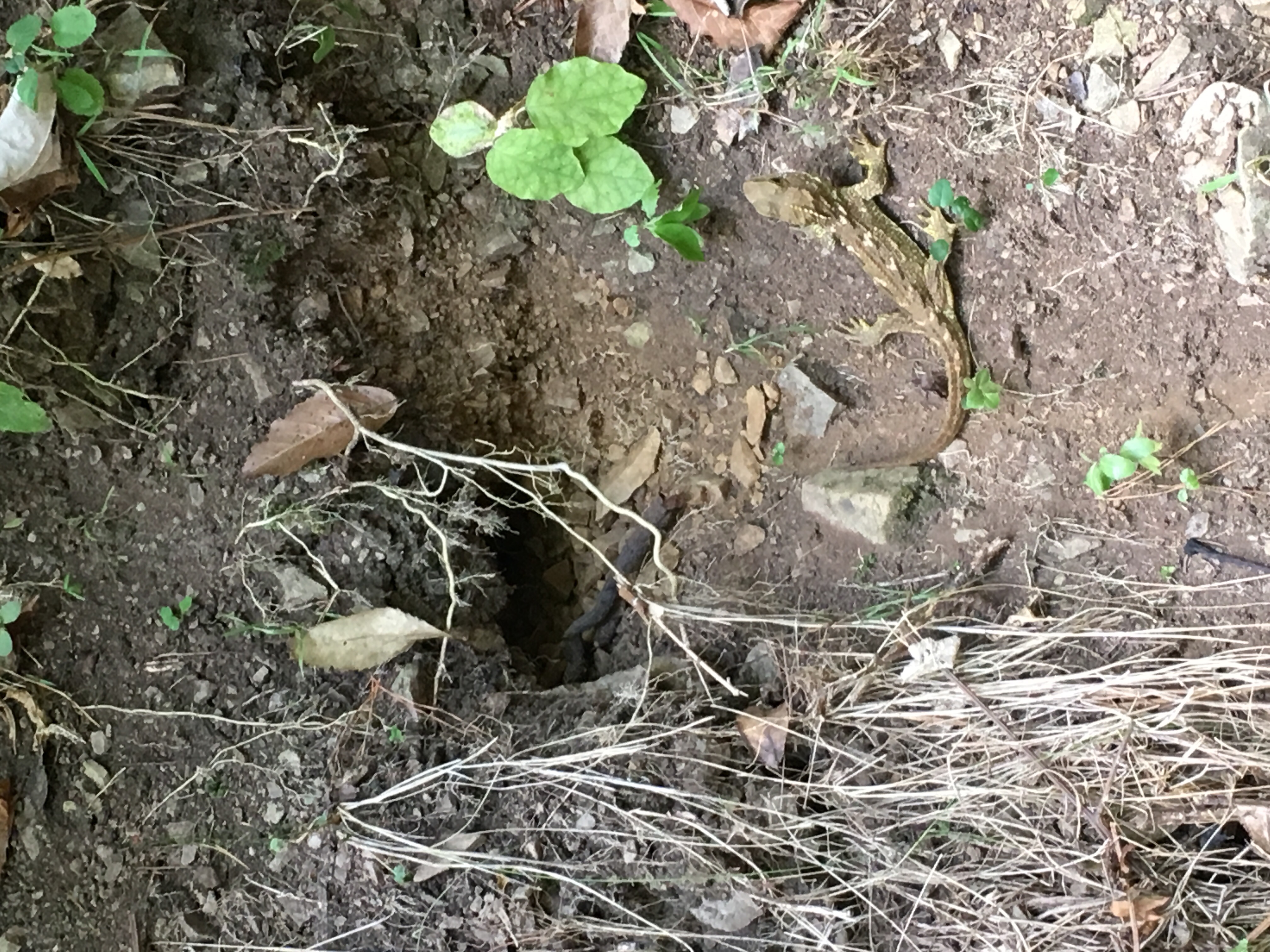
It had been a brilliant tour, and we left with enormous respect for New Zealand’s efforts to preserve and protect its indigenous species and habitats. Zealandia is almost entirely staffed by volunteers. Good on them.
After a quick lunch at the harbour, we popped into the Te Papà museum. To be honest, though, it didn’t have the impact of the Auckland museum on either of us. Not the museum’s fault, but we skipped, for example, the section about the Waitangi Treaty, having actually been to the Treaty Grounds in Waitangi, and the Maori meeting house was subtly different but something now quite familiar. There was an interesting exhibition about the Anzac conflict, very honest about the failures and a fascinating viewpoint of another country’s First World War experience. Once we’d had our fill, we hopped back on the bus to the campsite, ordered pizza to be delivered to our pitch, quaffed a delicious bottle of Esk Valley Syrah, and so to bed.
Tomorrow is the day of our ferry crossing to the South Island. Calm seas are forecast. Phew.
P.S. We’re being stalked by a cruise ship. Remember the Majestic Princess, the cruise ship in Sydney Harbour which followed us to Auckland? It was in Wellington today.
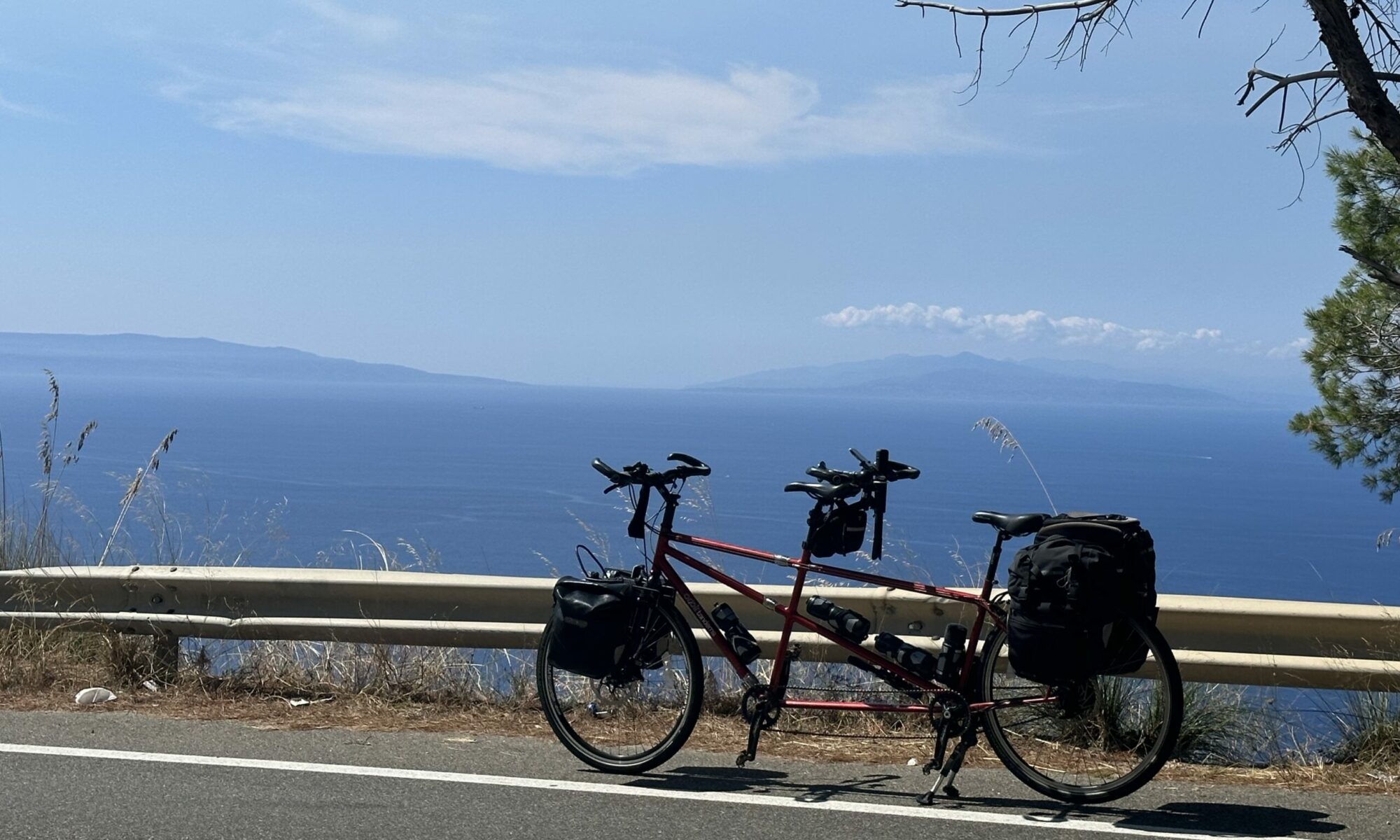
All looks amazing! Chris impressed by the wine tasting notes x